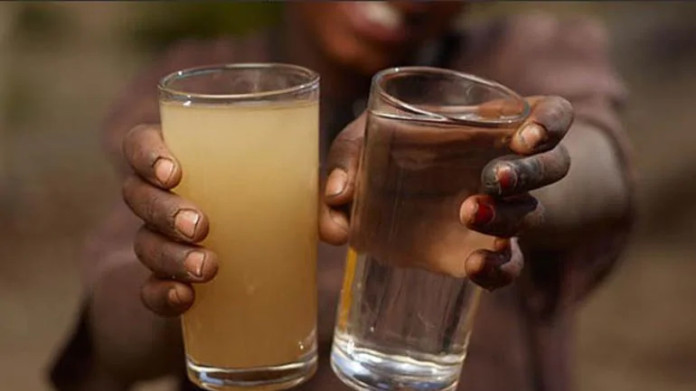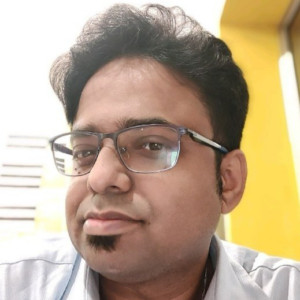Basirhat municipality, which encompasses 22.5 sq.km, was established on 1st April 1869, It is in West Bengal, adjacent to river Ichhamati. It gets flooded for more than seven months a year affecting people’s health and livelihoods. Daspara and Mathpara wards were picked for a pilot project for installing urban flood management frameworks.
Project area has long history of waterlogging because of climate change and global warming. There were many initiatives taken by local governmental body to mitigate this issue, but because of unknown reasons, they were not able to solve this issue. Due to urban flooding, quality of life of local people are rapidly degrading. It is also affecting the local social fabric.
During research visit, no underground sewerage system has been observed. Two types of latrines such as Septic Tank and Two-Pit Flash Latrine are popular among common people. Water logging is the major problem in low areas because municipality has not constructed drainage systems and natural drainage system is damaged due to unscientific urbanisation. It is shocking that ground water is the only source of drinking water in this locality. Also, poor solid waste management is another striking issue to be solved in near future.
To address this issue, research team primarily has analysed the adverse effects of waterlogging in peri urban locality. One of the key team members has said that waterborne and skin diseases are occurring due to inundation, subsequent stagnation & submergence from frequent flooding during monsoon. Side by side, in absence of proper solid waste management practices, the environment has been polluted and it has provided breeding grounds for vectors diseases. Also, it curbs the minimum access to safe drinking water mainly for poor & marginalized families.
In baseline study, research team has found out some interesting points as reasons of urban flooding in the post-globalisation era. The key findings are as follows:
- Pilot project site is lower than the adjacent areas
- Drainage system is poor.
- Unscientific urban infrastructural development has destroyed the natural drainage system
- During visit, a drainage channel is observed. But it is not capable to carry large volume of water.
In the first phase of the project, when researchers have asked locals regarding urban flooding. They have explained their distressful condition to the research team. Shefali, a resident of Daspara, has said that after monsoon, water stayed inside the locality for more than seven to eight months and it has impacted negatively on the growth of the locality. Also, Locals have complained that during rainy season, they have found the water to be unfit for drinking. Also, they have to cross the waterlogging areas to get the drinking water. It has spoiled their quality time.
In the pilot phase, research team has selected eighty six households in Daspara and Mathpara of Basirhat Municipality of North 24 Paragna, West Bengal to distribute cost effective simple to use water purification system called Amritadhara through the public participation method. For this, they did not charge a single penny. This project is supported by Humanitarian Innovation Fund – ELRHRA, UK, Bongs Prayukti International Pvt. Ltd, Naireeta Services & PRISM with IRS, Jahangir Nagar University, Bangladesh is the knowledge partner of this project.
Eminent environmental professional Mr. Swarnabha Bandyopadhyay said, “Access of pure drinking water is our constitutional right. Our primary aim is to help the local community to get proper, pure and hygienic water and also, installed permanent mechanism to restrain from inundation. In this way, we are trying to provide a long-term solution to the society. As per our previous experiences, it is observed that Amritadhara is the only option to us to provide access of pure and clean water to poor and marginalise people. We have successfully solved urban-flood related issues in India and abroad.”
During the research, social innovator and thinker, Dr. Aniruddha Dey said, “AMRITADHARA is our innovation. It can effectively remove arsenic/fluoride, iron, hardness and bacteria from potable water. It also reduces Salinity up to a significant level and remove brownish colour, bad odour. We have developed and designed it to treat Surface Water, Sub-surface Water and Ground Water as per the need of the people.” According to him, the major part of the innovation Amritadhara are highlighted below:
- Drinking water from poor quality water
- It is user-friendly
- It’s affordable as the cost comes to Rs 0.015per litre of safe drinking water
- Entire Water supply system can be managed by women
- Dependency on energy, skilled people, accessories are removed
- Provide social entrepreneurship opportunities for the unemployed
- Follows WHO recommended Household Water Treatment & Safe Storage (HWTS)
- This has potentials to change behavioural pattern(s) of maintaining Personal Hygiene
- Full compliance to regulatory norms
Amritadhara tells stories of women empowerments. It is manufactured by Barnali self-help group which is run by women. It can be manufactured locally. Interestingly, women stakeholders of the project areas, are showing leadership to support the battle against climate change and urban flooding.
After successfully installation of Amritadhara in Daspara and Mathpara, locals have thanked the research team for addressing the neglected & unsolved issue. Astami, a sufferer of water logging, has requested the team members to implement this project in a large scale to support all the stakeholders of Basirhat Municipality. She has also added that Amritadhara has changed their mindset and it has brought significant changes by abolishing gender politics and casteism in the locality.
| Query | Answer |
| Cost of setting up the single plant | As per present market price of various input component, costing of the single plant is INR 1 lac + GST |
| Cost of single system | As per present market rate of various component, the finish product is costed at INR 3300/- + GST (excluding INR 1000/- + GST as per year maintenance cost) |
| Details of the self-help group | A number of self-help groups are involved in manufacturing as well as distribution of this system across various districts of India |
| For how long is it free. | The system and purifying agent for the first year has been provided to the all the beneficiaries at free of cost. The reagent for the subsequent period needs to be procured by the beneficiaries, however it is noted the cost of these purifying agents are very small. |
| Size of the population it serves. | At present, project at Basirhat, directly benefit more than 350 persons and indirectly expected positive impact on more than 1000 persons. Further implementations of these systems in other parts of county, have already benefited more than 2.5 lacs persons. |
| What needs to be done to replicate it in all the low-lying areas | In order to replicate and scale up this system to all similarly low – lying areas, it would be to understand the present water quality in those areas and suitability of the Amritadhara system to purify the water and possibility of customization as well as financial sustenance of this system. |
| Are these models where people don’t mind paying for water and they are successfully run. | Willingness to pay is an important aspect for sustenance this kind of purification system. However, Amritadhara being a low – cost (capital and recurring) system, the expenses far out way the medical cost involve in treatment of water borne diseases. Therefore, these systems are successful in all communities where people are properly aware about the water borne diseases. |
By Rangeet Mitra, Senior Consultant, Prayukti Group










